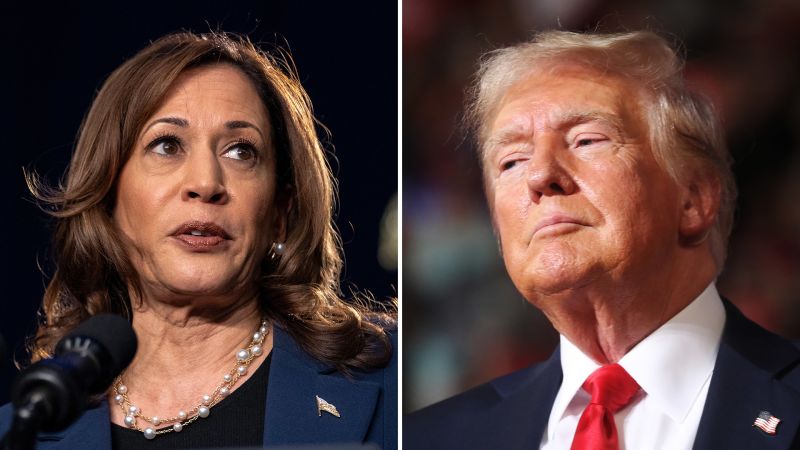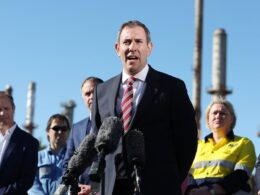Morganton, North Carolina
CNN
—
One month ago, battleground North Carolina was slipping away from Democrats. Now, with Vice President Kamala Harris at the top of the ticket, the state is competitive once again.
“Folks were feeling so downtrodden and they just didn’t feel like we could win again,” said Gena Singleton, a longtime party activist and leader of the Burke County Democrats. “All of a sudden, we were on the upswing and people want to be a part of it.”
But don’t just take Singleton’s word for it.
Since President Joe Biden ended his reelection bid and endorsed Harris last month, former President Donald Trump has made two trips to North Carolina, invested millions in new ads seeking to define Harris and feverishly worked to build up his campaign’s political organization across the state.
“We’re going to beat her,” Trump told supporters in Asheville Wednesday during a blistering speech aimed at his rival. “They may then get a third candidate, who knows?”
Few states have offered Democratic presidential hopefuls the number of disappointments the Tar Heel state has in recent cycles. It has been 16 years since Barack Obama delivered a North Carolina surprise in 2008 – the first and only time a Democratic candidate for the White House has carried the state in nearly five decades.
The question now is whether Harris will be able to drive up turnout in urban and fast-growing suburban areas in the state, particularly around Wake County’s Raleigh and Mecklenburg County’s Charlotte. Of the 836,000 voters the state has added since 2012, more than a third are in those two counties, which continue to add new residents every day. Biden took both four years ago by about a 2-to-1 margin.
“Whenever people say we’re not competitive as a Democratic state, that’s not true,” said Grayson Barrette, born and raised in western North Carolina, pointing to how Democrats have won seven of the last eight races for governor. “We’re the truest definition of a 50/50 state.”
Even before Biden dropped out, Democrats viewed North Carolina as their best offensive opportunity. In 2020, Trump beat Biden by about 74,000 votes out of 5.4 million cast. The margin of victory of 1.3 points – less than half his spread four years earlier – was the narrowest of any state Trump won.
“I think a lot of people are tired of him,” Barrette, who grew up in a family of Republicans but has become a loyal Democrat, said of Trump. “They really want somebody else and the Democrats are offering that this year. People are noticing and they’re willing to give Kamala Harris a chance.”
Both campaigns have spent millions in advertising in recent weeks, as Harris and Trump have rushed to define the vice president. The Harris campaign has spent $2.5 million in ads, on top of $13.5 million in earlier spending by the Biden campaign. The Trump campaign has spent $4 million, including more than $1 million on a pair of ads targeting Harris on border policy.
On the ground, Harris has opened more than 20 offices, with five more opening next week, according to her campaign. Harris will make her eighth visit to the state this year when she gives a speech on economic policy in Raleigh on Friday.
“We’ve had a whole lot of new energy and a lot of excitement – it’s almost electric,” said Kathie Kline, who leads the Buncombe County Democratic Party. “Our volunteer inquiries increased – quadrupled – almost overnight, as soon as we got the news that Kamala Harris was going to be on the ticket.”
Trump’s Asheville rally, also focused on economic policy, comes a few weeks after he visited Charlotte in one of his first events since Harris become the nominee. The former president’s campaign has opened more than a dozen offices since June, said North Carolina GOP spokesman Matt Mercer.
Though Democrats hold a narrow advantage over Republicans in voter registrations, that lead has declined over the last two presidential cycles as the number of Republicans and unaffiliated voters has grown. As of August 10, the state has 2.4 million registered Democrats, nearly 2.3 million Republicans and 2.8 million unaffiliated voters.
Mercer credited the party infrastructure with helping to reduce Democrats’ voter registration advantage by 500,000 people since the 2016 election. The “fundamentals” of running a statewide race in North Carolina haven’t changed, he said.
Hours before the former president was set to arrive in Asheville Wednesday, crowds of Trump supporters filled the downtown streets. Harris may have injected new energy into the race, but vast stretches of western North Carolina are still squarely Trump country.
“I’m going to work as hard as I can to get Donald Trump elected,” said Elise Negrin, who retired to North Carolina seven years ago from Long Island, New York. “We’re very excited.”
Lines of Trump admirers stretched down the block in downtown Asheville, a deep-blue enclave in a deep-red swath of the state.
“It’s hard to say what’s going to happen,” said Terri Garren, who drove about 30 minutes to attend her first Trump rally. “I just hope and pray that America wakes up.”
As she waited on Wednesday, she said she was concerned about the economy and illegal immigration and believes the hype over Harris is overblown.
“A lot of the love for that side will diminish,” Garren said. “Or it ought to.”
She was standing near other Trump supporters who were also attending their first campaign event for the former president. They believe the race could be shaping up to be tighter than they imagined, so they wanted to show their support.
“It is a battleground state. He barely won last time,” said Angela Rice, who drove about an hour to get to Asheville to see Trump. “We were not out in force in the last campaign. This is our first rally, so if it got us out, I’m hoping it got more people out.”
Waiting for hours in line, she said, was the least she could do.
“If he’s willing to take a bullet for me,” Rice said, “then I can come out and support him.
CNN’s David Wright contributed to this report.







